I do so much mending, and have posted about it so much, that people ask me how I know when to stop. People also ask me what to do with clothes that are beyond repair from their point of view. There is no simple answer. However, I’ve reached that point with a few things in my wardrobe recently.
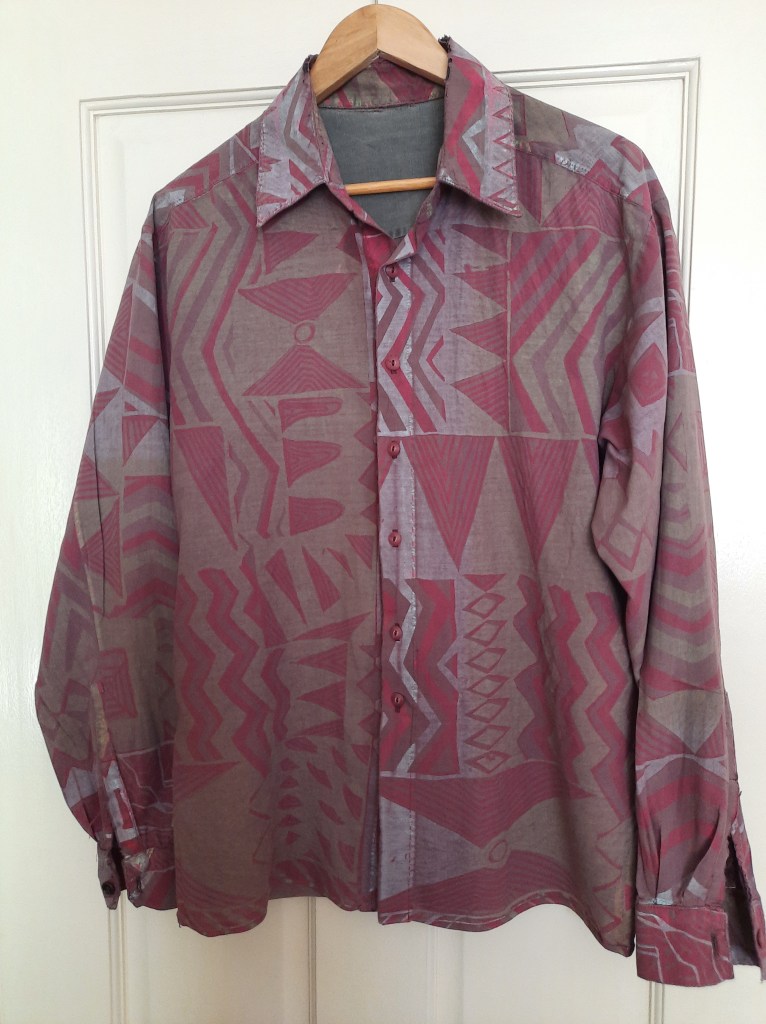
I made this shirt in 2009. I bought the fabric from a First Nations business at the WOMAD festival with birthday money my parents gave me. There was not enough fabric to make the yoke facing from the main fabric so, as you can see, I made it from something else I had in my stash. The buttons were reused, and when I looked closely–one of the cuff buttons is not a match. This is something I’m often prepared to do. I must have liked the buttons enough to use them for all the parts that really show and accept one cuff not matching.



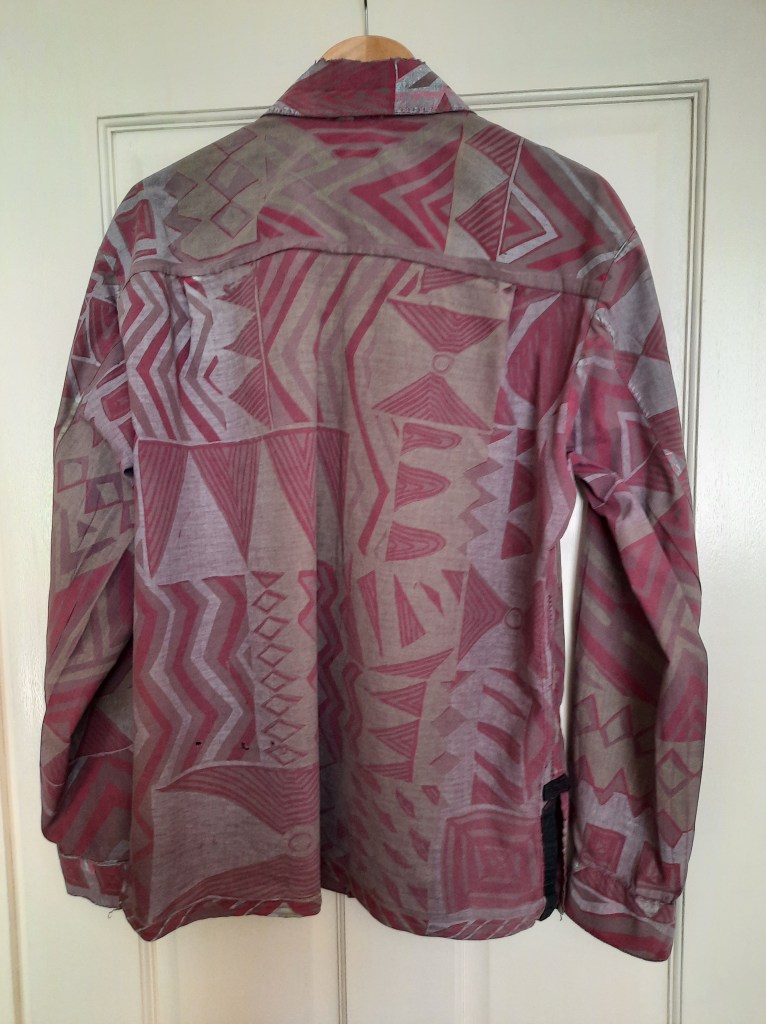
It has had a LOT of wear and given me a lot of pleasure. But it shows! The collar has worn through. The yoke and yoke facing are either worn through or so close, that turning the collar is not a solution. The plackets and vents are threadbare in places and worn through in others. There are holes in random places, some from thorns or wire and others from sheer wear and tear.
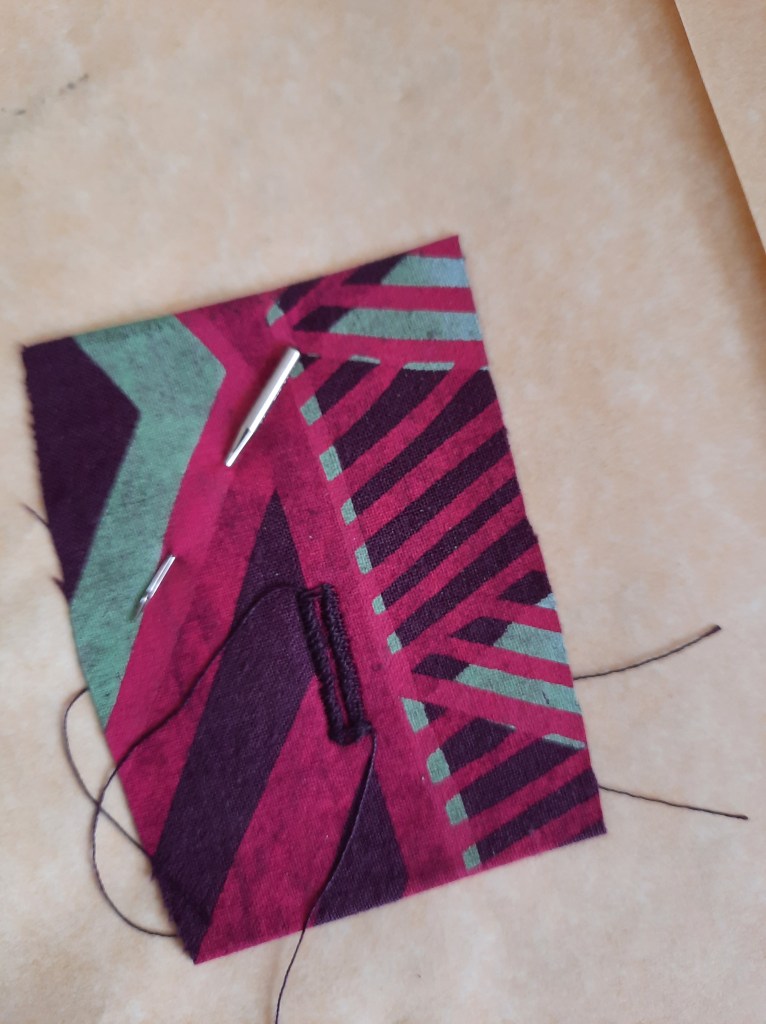
It is an entirely different colour than it was when new. This is the scrap pinned into my 2009 notebook, with a rehearsal buttonhole for good measure.
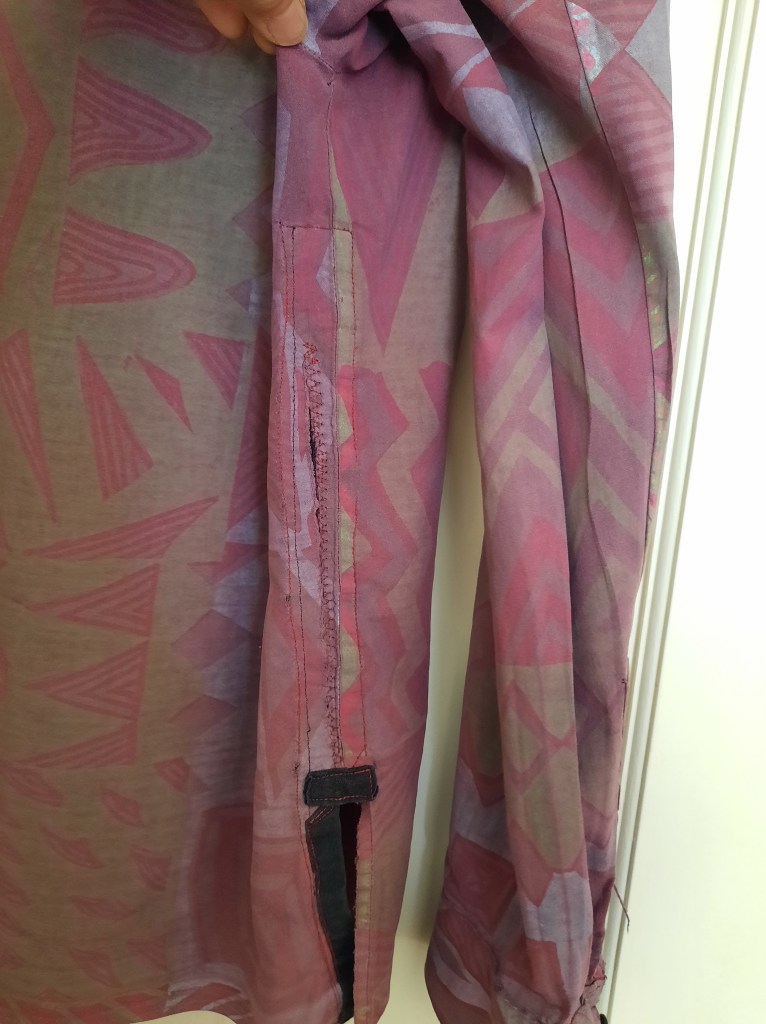

And… in terms of mending, this shirt has been on gardening duty for some time and almost reached the end when it tore most of the way from hem to the point where the sleeve joins the body under the arm. I couldn’t part with it yet and patched it on the inside up the main tear (with some not so pretty machine stitching), and on the outside where I had to, near the vent. With black fabric! It is a tribute to how closely people are not looking, that I’ve had compliments on this shirt even since this mend. They see what remains of this fabulous print, and look no further.

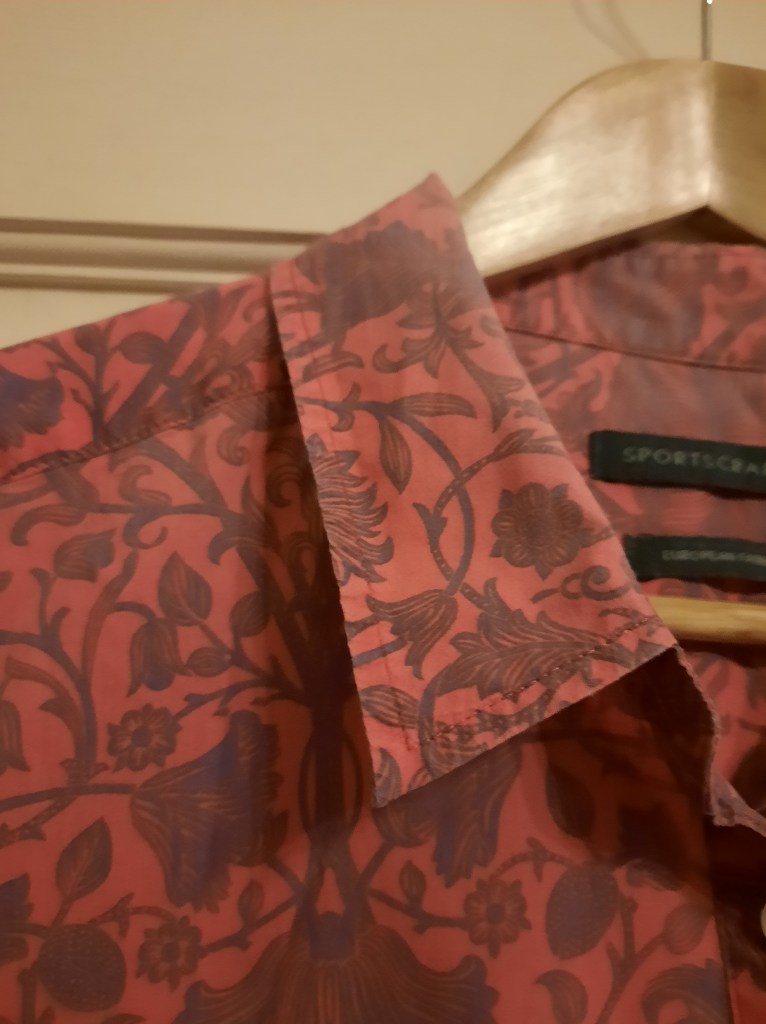

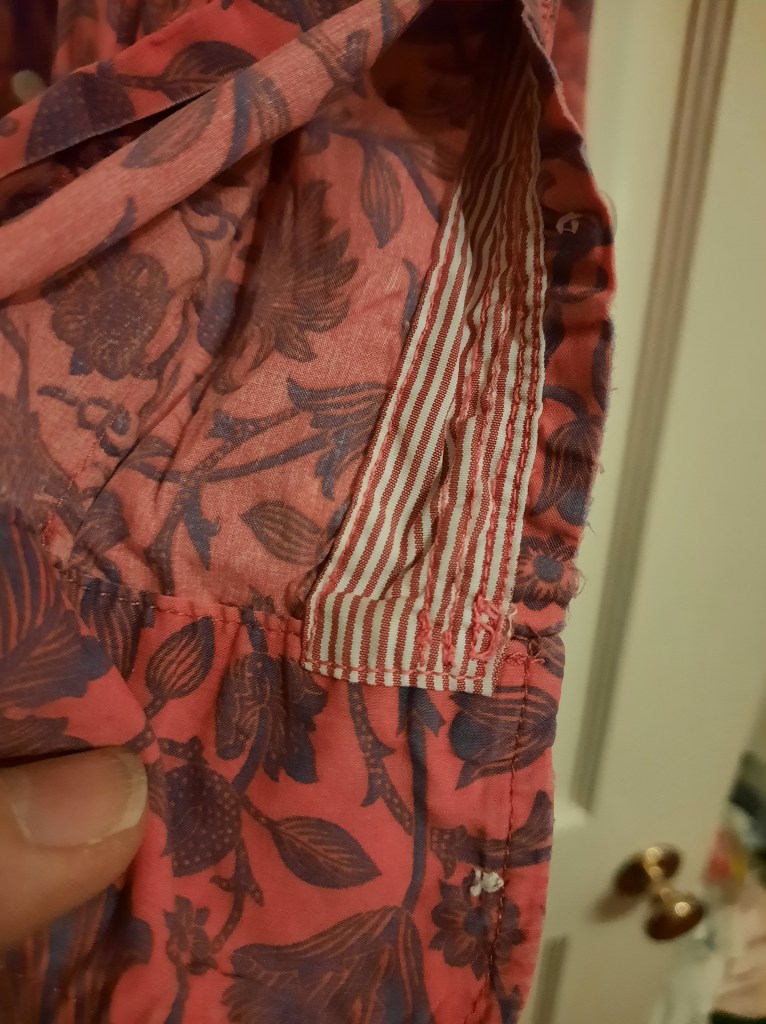
I have also enjoyed this shirt. But not for long. I bought it about a year ago, when I was scouring op shops for outfits for civil discobedience (you know–looking for sequins!) do follow the link–it’s fun! It is made of a beautiful fine cotton with a glorious print. It was very faded when I bought it, and very soft as things that have been much worn and washed often are. I made an exception buying something so pink, because I loved the print so much and it felt so good. It’s beautifully made. When I got it home I realised one of the plackets had a big tear right beside the placket binding. I patched it on the inside, and with no hope of matching the print, matched the weight of the fabric instead with another well worn shirt that had made its way to me in pieces. Poor choice of vintage thread made the mend less elegant than it could have been. Never mind! But now–I can see the interfacing on the collar, which is all that is holding it together, and the fabric has worn right through under the arms. Unless I want to apply an A4 sized patch… (it won’t be lightweight and cool and lovely after that), it’s reached the end.

And so–with a clear use for bunting having come my way, I decided these much loved shirts could finally finish their lives as garments. They are well past the point where they could become bags or lining. Bunting is a great application, where the beauty of the prints can be enjoyed and no more wear and tear will be applied to them. And, so, with my gratitude for those who grew, wove, printed and in one case stitched them, they have entered their next lives as elements of celebration.

I don’t think there is never an objective point, only a inevitable tipping point for when repairs end. Often I use such fragile pieces as backing for my embroidered work, when a light whisper of fabric is enough to give some body to the stitching on top.
LikeLiked by 1 person
I agree with you, Leonie, there is no objective point to stop mending! I am always a bit interested by when that tipping point arrives. Sometimes it approaches and then recedes. Sometimes I realise I’m longing for it to arrive but I can’t hurry it. Sometimes pull something off the recycle pile and get it back into circulation through some change I make. I certainly use very worn fabric as interfacing sometimes… and I think that’s a great use. I just have so many such fabrics right now that I need to find others as well.
LikeLike